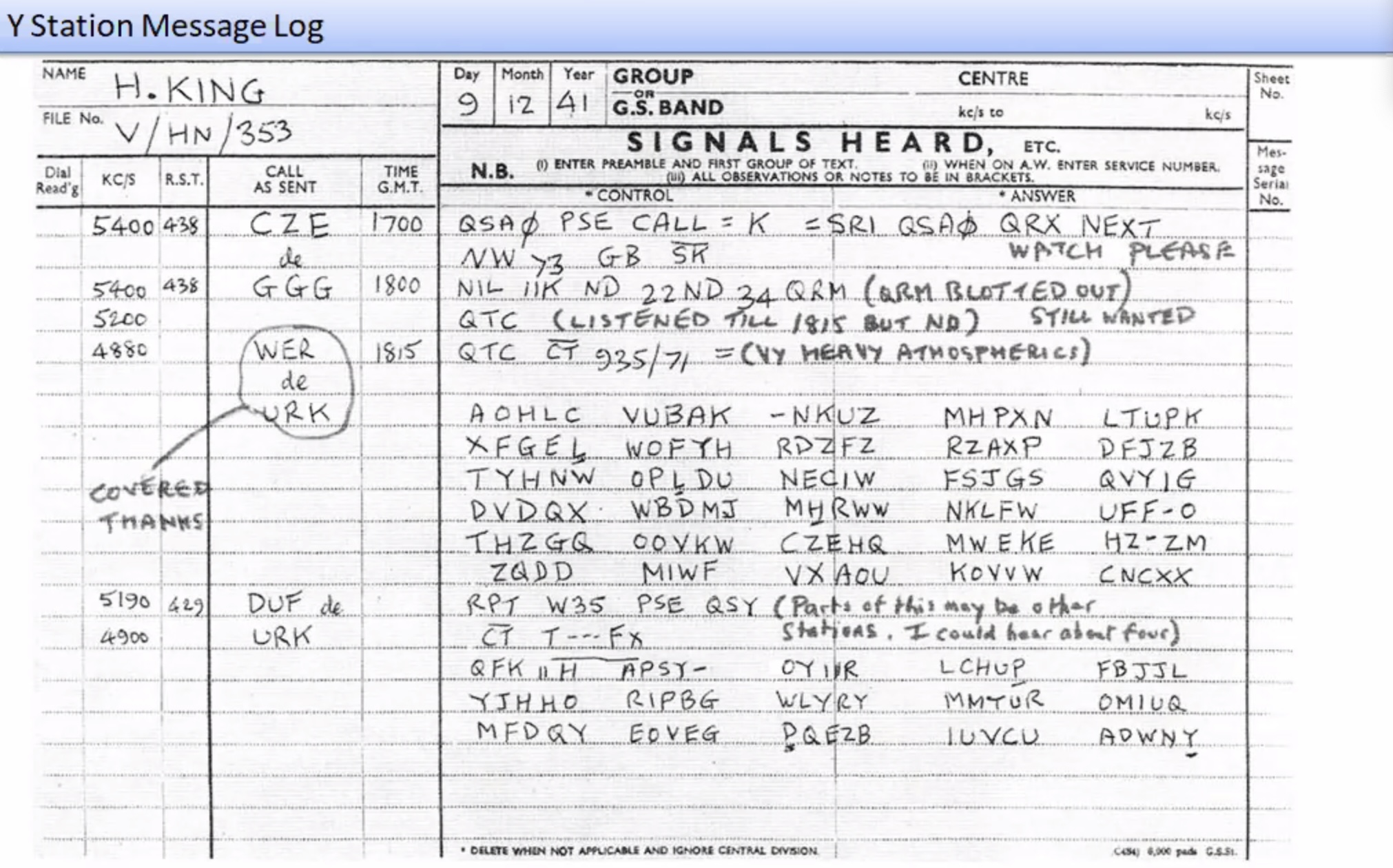At the beginning of 2021 a new virtual amateur radio club was formed, the Radio Security Service Memorial Amateur Radio Society, GI5TKA, with the specific remit to commemorate the work done by the RSS and Voluntary Interceptors during World War Two. We have now planned our first on frequency activity to do just this.
I became fascinated by this notable part of our amateur radio history, largely as a result of growing up in my earlier years beside a Gilnahirk Y Station, just south of Belfast, which was operational up until 1978. Locals knew its nature and that it was top secret!

Amateur Radio’s Legacy
Our hobby has a exceptional history, the role it played during the Second World War is nothing short of remarkable! Some 1,500 UK radio amateurs volunteered to listen to the air waves and log suspicious transmissions from Nazi occupied Europe. They all signed the Official Secrets Act and their story was untold well into the 1970s.
Imagine scanning across a portion of a band that you were asked to monitor. Looking out for encrypted transmissions, apparently random groups of five characters. Signals are weak, often over shadowed by stronger commercial signals. Dealing with static and probably using simple compromised antenna system attached to a home brew receiver. No off the shelf rigs in the 1940s!
Voluntary Interceptors sent their logs daily to a secret address, PO Box 25, and these logs together with thousands of other logs ended up in the Bletchley Park system for processing – the code breakers. Could you imagine doing this every night? An example of such a log sheet would be something like this:

Unique on fréquence activity
To get an idea of what VIs were asked to do we have planned an activity, taking place on Sunday 13 June which aims to commemorate the work of VIs by mimicking what they did. I am indebted to the support of CWOps, FISTS and LICW clubs who all stepped up very quickly to support this initiative. Isn’t it great to see these clubs all uniting behind a common purpose.
The activation, due to commence on 13 June, has four operational time slots, for one hour per slot; 11:00, 14:00, 17:00 and 20:00 hours UTC. GI5TKA will call CQ as follows:
QSO format being followed
CQ CQ CQ VI de GI5TKA GI5TKA K, the replying station will answer and GI5TKA will respond:
Tnx fer Call. UR RST XXX XXX. Name is XXXX XXXX. QTH is location location (club membership number may be exchanged). The replying station will then respond in kind and pass back to GI5TKA who will then transmit a short cypher of 30 to 40 characters in groups of 5 characters and the cypher key, which will be a simple Letter Shift key, ensuring that we comply with licensing regulations which prohibit the transmission of secret information. The replying station will acknowledge receipt and terminate the QSO. More details are set out on the GI5TKA QRZ page.
Why the 13 June?
This date marks the anniversary of the first airdrop in 1941 of weapons to the French Resistance, arranged by Georges Bégue and Pierre de Vomécourt. Two CLE Canisters were parachuted onto the estate of Philippe de Vomécourt near Limoges. The Vomécourt brothers created the first two SOE networks (or reseau) in France, named Autogiro and Ventriloquist.[6]
Most activity will likely take place on 20 metres, probably the best band for crossing the Atlantic during daylight hours. Do track GI5TKA on RBN to ascertain the precise band / frequency being used at a specific time.
One of the Club aims is to promote CW, as well as to commemorate the work down by the RSS and VIs. This activity will provide opportunity to move beyond the basic rubber stamp QSO by copying accurately groups of random letters, just as VIs did, and to test your copy accuracy, perhaps in conditions that are not ideal. It will be a fun activity and results will be published so you can check how you did.
I hope you will find the activity enjoyable and perhaps stimulate your interest in this amazing story, one which amateur ratio enthusiasts played a vital part in the service to King and Country.
